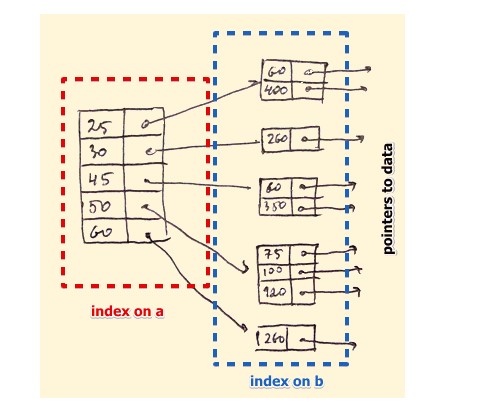Why indexing is important to store data in databases? What is multilevel index?
- A database index is a data structure that improves the speed of data retrieval operations on a database table at the cost of additional writes and storage space to maintain the index data structure. Indexes are used to quickly locate data without having to search every row in a database table every time a database table is accessed. Indexes can be created using one or more columns of a database table, providing the basis for both rapid random lookups and efficient access to ordered records.
- Indexing is a way to optimize the performance of a database by minimizing the number of disk accesses required when a query is processed. It is a data structure technique that is used to quickly locate and access the data in a database.
- The index is a database structure that can be used to improve the performance of database operations. Indexes can be added to a database table in different ways. In order to create an index, you specify a field expression. In general, the field expression is a single name, such as EMP_ID, for a field.
Indexing is important to store data in databases because:-
- A database index contains all the necessary information to access data quickly and efficiently. In today’s society, the business of data is rapidly advancing. In fact, some tech giants process several hundred petabytes (1000⁵ bytes) of data per day. Storing all of this data in a database is great, but for a data company, being able to access that data efficiently is paramount to success.
- One way of solving the access issue when it comes to large amounts of data is through the use of indexes. Indexes serve as lookup tables that efficiently store data for quicker retrieval.
- This index is intended to provide a concise, useful guide to all pertinent facts in the book and to provide an informative, balanced overview of what is in the book. We will provide a list of main entries and subentries in alphabetical order that will include both proper names and subjects as well.
- Even though indexes are key data structures in databases, they bring the cost of additional writes and the use of more storage space to maintain the extra copy of data. In addition, they need to be frequently maintained in order to be as performant as possible. Nevertheless, the performance gain when using indexes is significant thus making the overheads of maintaining them negligible.
- In order to have a healthy set of indexes, you need to run frequent maintenance operations. Such operations include index fragmentation checks, reorganization, and rebuild actions.
OR,
- It uses the key Search method from/in value pair and uses sequential for searching the database and storing.
- It directly locates the place where to store data instead of row-by-row searching.
- Better performance of queries
- It needs less space and less maintenance overhead for insertion and deletion.
- Less expensive, better databases. for a small volume of data
Multilevel Indexing
Multilevel Indexing in a Database is created when a primary index does not fit in memory. In this type of indexing method, you can reduce the number of disk accesses to short any record and kept on a disk as a sequential file and create a sparse base on that file.




Comments
Post a Comment